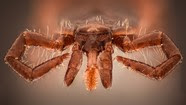Medicine by Alexandros G. Sfakianakis,Anapafseos 5 Agios Nikolaos 72100 Crete Greece,00302841026182,00306932607174,alsfakia@gmail.com,
Πληροφορίες
Ετικέτες
Πέμπτη 1 Αυγούστου 2019
Αναρτήθηκε από
Medicine by Alexandros G. Sfakianakis,Anapafseos 5 Agios Nikolaos 72100 Crete Greece,00302841026182,00306932607174,alsfakia@gmail.com,
στις
10:24 μ.μ.

Ετικέτες
00302841026182,
00306932607174,
alsfakia@gmail.com,
Anapafseos 5 Agios Nikolaos 72100 Crete Greece,
Medicine by Alexandros G. Sfakianakis
Εγγραφή σε:
Σχόλια ανάρτησης (Atom)
Αρχειοθήκη ιστολογίου
-
►
2023
(276)
- ► Φεβρουαρίου (133)
- ► Ιανουαρίου (143)
-
►
2022
(1976)
- ► Δεκεμβρίου (116)
- ► Σεπτεμβρίου (158)
- ► Φεβρουαρίου (165)
- ► Ιανουαρίου (161)
-
►
2021
(3661)
- ► Δεκεμβρίου (161)
- ► Σεπτεμβρίου (274)
- ► Φεβρουαρίου (64)
- ► Ιανουαρίου (368)
-
►
2020
(4554)
- ► Δεκεμβρίου (400)
- ► Σεπτεμβρίου (381)
- ► Φεβρουαρίου (638)
- ► Ιανουαρίου (691)
-
▼
2019
(4999)
- ► Δεκεμβρίου (924)
- ► Σεπτεμβρίου (845)
-
▼
Αυγούστου
(605)
- Medicine by Alexandros G. Sfakianakis,Anapafseos 5...
- Medicine by Alexandros G. Sfakianakis,Anapafseos 5...
- Sorry !
- Nuclear Medicine and Molecular Imaging
- Chinese Clinical Oncology
- International Journal of Molecular Sciences
- Hindawi Publishing Corporation
- BMJ Open Current Issue
- BMJ Open recent issues
- Pediatric Rheumatology
- BMC Complementary and Alternative Medicine
- Bioengineering
- MedWorm Cancer & Oncology Research
- Difficult Diagnosis of Peritoneal Serous Papi...
- MedWorm Cancer & Oncology News
- Natural hormone 'turbo charges' the immune sy...
- MedWorm Cancer & Oncology Clinical Trials
- MedWorm Allergy & Immunology
- Evidence on coffee consumption and pancreatic...
- Cells
- Giant subcutaneous metastasis originating from v...
- Academic Radiology
- European Journal of Emergency Medicine - Publ...
- Clinical Endocrinology
- Journal for ImmunoTherapy of Cancer
- Clinical Colorectal Cancer
- BMC Cancer -
- *Journal* of *Medical Internet Research*
- American Journal of Otolaryngology
- Environmental Toxicology and Chemistry
- Acta Biomaterialia
- BMC Anesthesiology - Latest Articles
- Journal of Allergy and Clinical Immunology
- European Journal of Anaesthesiology (EJA) - P...
- Cautery Burns: Prevention Better than Cure! Abst...
- Postmortem computed tomographic features in the...
- Medicine by Alexandros G. Sfakianakis,Anapafseos 5...
- Fertilizer and soil conditioner value of broiler...
- Crosstalk between signaling pathways and DNA dam...
- Chronic neuropathic pain following inguinal hern...
- A Critical Review of Exercise Training in Hemodi...
- How Argentina became a super-exporter of agricul...
- Simone de Beauvoir on Sexual Difference
- The Militarization of Girls and Women: Violence a...
- The concept of peri-operative medicine to preven...
- Vitamin D and LL-37 in cirrhotic patients with c...
- Age Differences in the Effects of Speaking Rate ...
- The economic burden of HIV and type 2 diabetes c...
- Apple phlorizin oxidation product 2 inhibits pro...
- Journey of Journal of Indian System of MedicineS...
- Factors Influencing Change in Behavior Among Res...
- The Effects of Transcranial Direct Current Stimu...
- Rare case of an upper urinary tract carcinoma (U...
- Identification of Antibiotic Administration as a...
- Volume Guaranteed Ventilation During Neonatal Tr...
- Spotlight on the Association of Radioactive Iodi...
- Succinylcholine Use and Dantrolene Availability:...
- Not All in Your Head (and Neck): Stroke after Bl...
- Kerala Journal of Ophthalmology , Sight is a r...
- A Retrospective Observational Study of the Neuro...
- Odontoid Fractures: A Critical Analysis Review»O...
- Infants & Young Children - Current Issue , Fro...
- Physical function and age at natural menopause: ...
- Contemplating Our Maternity Care Crisis in the U...
- Usual and Unusual Patterns of Transformation Amo...
- Eye & Contact Lens - Current Issue An Update of...
- The impact of social media in orthopaedicsIn rec...
- Misinterpretation of USP 797 ContinuesNo abstrac...
- Breast Imaging ,
- Oncology Letters - Volume:18 Number:4 Spandidos Pu...
- A Treatment-Decision Score for HIV-Infected C...
- Audio Summary: Effect of Vitamin D on BMD, Eff...
- Follow-up Study Methods for a Longitudinal Cohor...
- Detection of blood and DNA traces after thermal ...


Δεν υπάρχουν σχόλια:
Δημοσίευση σχολίου